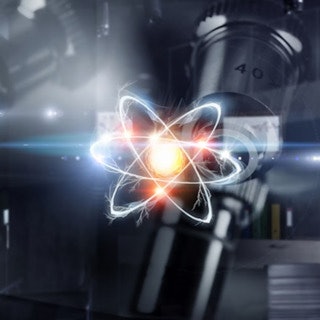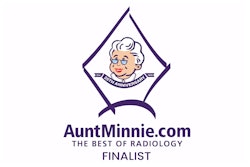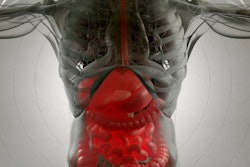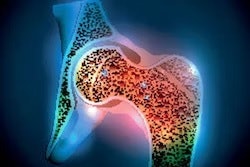Best Radiologist Training Program
Minnies 2024 winner: Emory University Hospital, Atlanta, GA

Emory University Hospital in Atlanta has taken the prize for Best Radiologist Training Program this year, winning the category for a second time.
The program features a four-year diagnostic radiology residency, led by director and neuroradiologist Ryan Peterson, MD. Emory also offers an interventional radiology residency that trains participants in interventional oncology and transplant and reproductive health interventions, and through its School of Radiologic Technology, a 24-month certification program that incorporates both classroom and clinical instruction.
What sets Emory's program apart? Its dedication to resident education and a strong culture of mentorship, support, and collaboration, according to Peterson.
"Under the guidance of Dr. Mark Mullins [Professor and Vice Chair for Education, Department of Radiology and Imaging Sciences] and Dr. Christopher Ho [former program director], our residency has evolved to prioritize educational excellence," he told AuntMinnie.com. "Our department chair, Dr. Amit Saindane, is committed to fostering an environment that prioritizes resident education with patient care, research, and innovation."
Emory takes pride in the diversity of its educational opportunities, Peterson said. The diagnostic radiology residency program offers specialized tracks, including a Clinical Educator track, a Global Health track, an Integrated Imaging Informatics track, a Molecular Imaging in Medicine track, a Quality Improvement and Innovations track, and a Research track.
"Emory augments clinical training with multiple special interest tracks that allow residents to tailor their training to fit their career goals," he noted. "This diversity builds a culture of organic mentorship and sponsorship, where residents benefit from a wide range of perspectives and guidance."
A key value of the training program is staying at the forefront of advancements in radiology through various collaborations, including a translational research and technology development partnership with the Georgia Institute of Technology in Atlanta and a global health partnership with Black Lion Hospital in Addis Ababa, Ethiopia, according to Peterson.
"These collaborations ensure that Emory's residents are well-equipped to adapt and thrive in the future of radiology, blending advanced skills with a commitment to diverse, patient-centered care," he said.
AuntMinnie.com · Minnies 2024 - Best Radiologist Training Program
Runner up: University of Mississippi, Jackson, MS
Best Radiologic Sciences Program
Minnies 2024 Winner: Thomas Jefferson University, Philadelphia, PA

Thomas Jefferson University (TJU) adds to its ample collection of Minnies by once again winning the Best Radiologic Sciences Program category, its fifth win in this category over the past 11 years. It seems fitting as the university celebrates its 200th anniversary.
Based in thriving Philadelphia, TJU’s radiology program is built on the mission of education and opportunity. Students in the radiologic sciences can gain the knowledge, skills, and behaviors to work and excel in several medical imaging and radiation sciences concentrations. These include radiography, MRI, CT, invasive cardiovascular technology, sonography, and radiation therapy among several other areas.
Colleen Dempsey, chair of TJU’s Department of Medical Imaging and Radiation Sciences and director of radiography, told AuntMinnie.com that the students and graduates are the success of the university’s programs.
“They are well-rounded, professional, caring, and competent medical imaging and radiation sciences professionals,” she said. “They are highly sought out by employers and become leaders in our profession.”
The program also boasts a 100% employment rate across all imaging concentrations over the past years, with seven of the nine programs being programmatically accredited.
Dempsey also applauded the faculty for bringing wisdom from years of experience into the classroom.
“This is a testament to our dedicated and expert faculty who live our department mission to provide a comprehensive education preparing students for entry-level practice in medical imaging and radiation sciences as competent, caring members of the healthcare team, cultivating professionalism and life-long learning,” she added.
Students also can access high-tech lab equipment to help them gain experience. These include the following: a Virtual Environment Radiotherapy Training (VERT) room, a dosimetry lab with three planning systems, a Diacor laser patient positioning radiation therapy lab with Rando Phantom anthropomorphic model, radiation therapy immobilization device fabrication labs and equipment, and imaging scanners by Canon and GE HealthCare among other equipment.
Additionally, the radiology department has over 120 clinical affiliation agreements with medical institutions, private offices, and standalone medical imaging departments. Dempsey said the relationships help bring in students and provide them opportunities to work in the community.
As for what the Minnies Award means to her, Dempsey said that the award shows that “people have faith in us.”
“It speaks to what we’re trying to do as a profession to be seen, and for all of us on the patient care team to see that medical imaging and radiation sciences professionals are an important part of the care team,” she said.
AuntMinnie.com · Minnies 2024 - Best Radiologic Sciences Program
Runner-up: Quinnipiac University, Hamden, CT
Most Significant News Event in Radiology
Minnies 2024 Winner: Researchers explore radiology applications for large language models

The 2024 Minnies winner for the category "Most Significant News Event in Radiology" recognizes how researchers are exploring imaging applications for large language models (LLMs) -- a topic that has elicited a flurry of activity over the last year.
A range of studies have tackled the subject, with teams from around the world presenting work that addresses everything from how the use of smaller LLMs for imaging translates to better sustainability; how open-source LLMs compare with GPT-4 on x-ray reports; the feasibility of using LLMs to generate x-ray reports on local systems without compromising patient privacy; and how radiology-specific LLMs generate professional report impressions to two studies presented at the recent Conference on Machine Intelligence in Medical Imaging (CMIMI) – one which indicated that LLMs can monitor AI software after it has been deployed in the radiology department and another that described how an LLM approach can successfully label abnormal organs on CT reports.
In fact, at CMIMI, Elliot Siegel, MD, of the University of Maryland in College Park, noted that not only is AI technology in general becoming more stable -- and thus more ready to be incorporated into clinical practice -- but the use of LLMs is coming to the fore.
"[LLMs] are becoming a predominant topic … [and we're really still] scratching the surface on how to use them," he told AuntMinnie.com.
Yet reservations regarding LLMs remain, with some urging that their efficacy be carefully monitored as they are further optimized for medical use. In a study published in April of last year in the American Journal of Roentgenology, Asser Elkassem, MD, and Andrew Smith, PhD, both from the University of Birmingham in Alabama, wrote that although LLMs such as ChatGPT can, for example, help automate radiology reports, they can be prone to error. Another study warned that LLMs can perpetuate race and gender biases. And the question of whether open-source LLMs are effective for use in the radiology department continues to be deliberated.
"LLMs also have weaknesses and challenges, such as biases, data privacy concerns, lack of interpretability, susceptibility to adversarial attacks, and ethical considerations," Elkassem and Smith noted.
Even with these concerns in mind, there's no doubt that the role LLMs will play in radiology will continue to develop as the technology is refined for applications in the imaging arena.
Runner-up: CMS backs reimbursement for CT colonography
Biggest Threat to Radiology
Minnies 2024 Winner: Radiology workforce shortages
For the second year in a row, radiology workforce shortages was voted the winner of the "Biggest Threat to Radiology" category.
Medical societies continue to explore workforce trends and lobby policymakers to identify how these shortages can be mitigated. What's more, research concluding that attrition wasn't to blame for the shortage of radiologists was voted in as the Minnies winner for Scientific Paper of the Year.
Experts have proposed several ways to mitigate workforce shortages. In April, Beth Israel Medical Center researchers had a clinical perspective published outlining nine ideas for radiology departments to consider. And in January, a Canadian team highlighted that radiation oncology’s workforce issues can be addressed at the institutional level by spurring interest among medical students and expanding into underserved areas.
“The current radiology landscape has an imbalance between the rising demand for radiology services and the national radiologist workforce available,” wrote a research team led by James Rowan, MD, from Beth Israel Medical Center in Boston.
There are also shortages of radiologic technologists (RTs). In a white paper published in July on workforce trends, the American Society of Radiologic Technologists (ASRT) highlighted increases for 2022 and 2023 in vacancy rates for all imaging and therapeutic disciplines. Vacancy rates, which refer to the number of unfilled positions that are actively being recruited for, were at their highest levels since ASRT started tracking staffing metrics in 2003. For example, the technologist vacancy rate in 2023 was at an all-time high of 18.1%, an increase from 6.2% in 2021.
The white paper was highlighted at the 2024 International Society for Computed Tomography (ISCT) meeting in September, held in Boston. Geoffrey Rubin, MD, of the University of Arizona College of Medicine Tucson, provided an overview of key issues in the radiology workforce landscape.
“What comes out of this document is that currently there's about an 11% annual resignation rate amongst the technologists, and this is illustrative of the stresses and challenges that are present within the field,” Rubin said. “We are at a moment in time where we have the greatest number of vacancies across the field that we've ever had.”
Rubin suggested that having medical aids and limited x-ray operators could help relieve workforce strain for technologists.
One thing's for sure. The challenge of radiology workforce shortages isn't going away anytime soon.
Runner-up: Private equity/corporatization of radiology
Hottest Clinical Procedure
Minnies 2024 Winner: Theranostics

The Minnies expert panel has named theranostics as this year’s Hottest Clinical Procedure, edging out four-time finalist and two-time winner photon-counting CT.
According to experts, theranostics has picked up so much momentum that it is driving the equivalent of an “industrial revolution” in nuclear medicine. Not least, the approach has led to a treatment paradigm shift for men with prostate cancer, with lutetium-177 prostate-specific membrane antigen-617 (Lu-177 PSMA-617, Pluvicto) and PSMA-PET imaging agents leading the way.
Notably, one of the finalists in the Minnies Image of the Year category this year was a PSMA-PET scan that showed how men with prostate cancer may respond to Pluvicto treatment.
Theranostics is a portmanteau of "therapy" and diagnostics" and refers to the dual approach of using the same molecular ligands to both image and treat cancer. It is a relatively simple concept that can be summed up with the expression, “See what you treat and treat what you see.”
While one could argue that the approach isn’t “new” (nuclear medicine departments have provided thyroid cancer treatment with a pair of radioactive iodine radioisotopes since the first half of the 20th century), today the approach is also being used successfully to treat neuroendocrine tumors and initial studies show encouraging results in patients with treatment-refractory meningioma.
Yet perhaps what is most exciting about theranostics is what lies ahead. The development and production of new radioisotope imaging and therapeutic agents are proceeding at full steam.
While Lu-177 is a beta-emitting radionuclide, researchers are developing more powerful alpha-emitting radionuclides, such as astatine-211 and actinium-225, and once these new pairs complete clinical trials, more effective treatments for cancer are expected to follow. Some researchers even suggest theranostic “cocktails” may be an effective approach.
New PET protocols, treatment guidelines, and even new treatment delivery methods are in development. Moreover, driven by the theranostics boom, small-footprint cyclotrons have entered the market to increase in-house production of commercial PET radiotracers. Also, significantly for patients, access is increasing, with new theranostic centers opening up across the country.
In all, the future is bright for theranostics, and while this is the first time the approach has been named in the Minnies awards, we suspect that it is likely not its last.
Runner up: Photon-counting CT


















